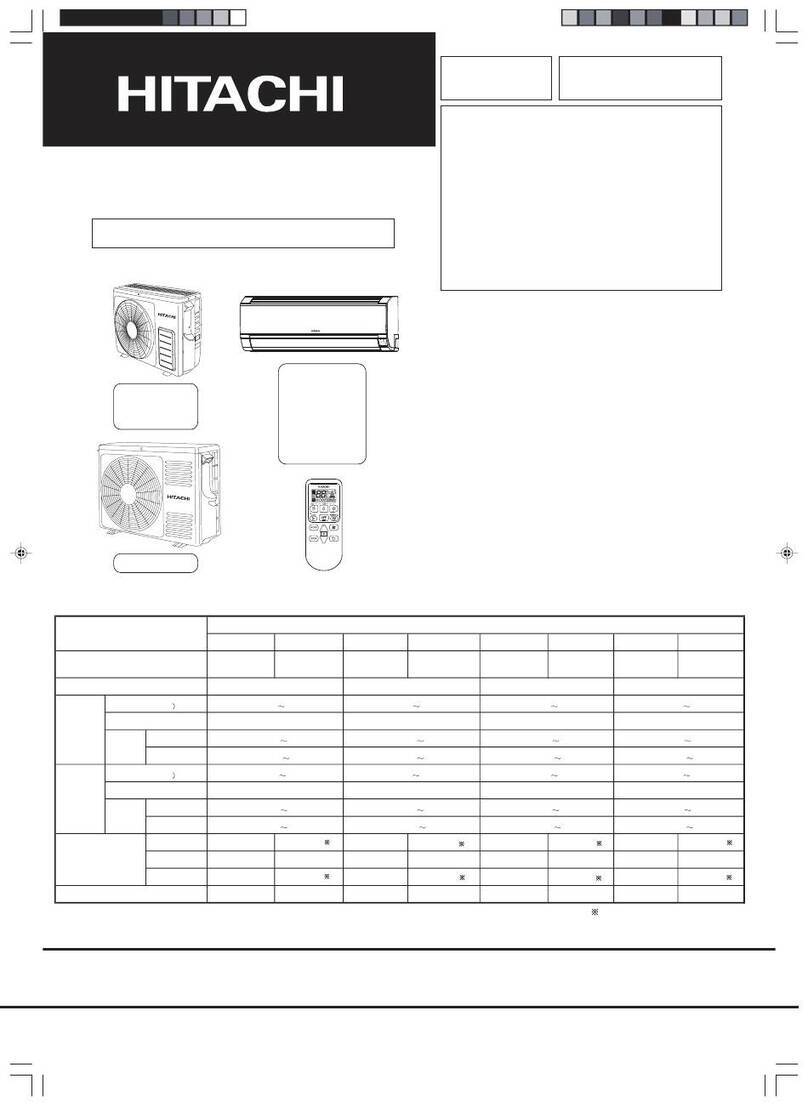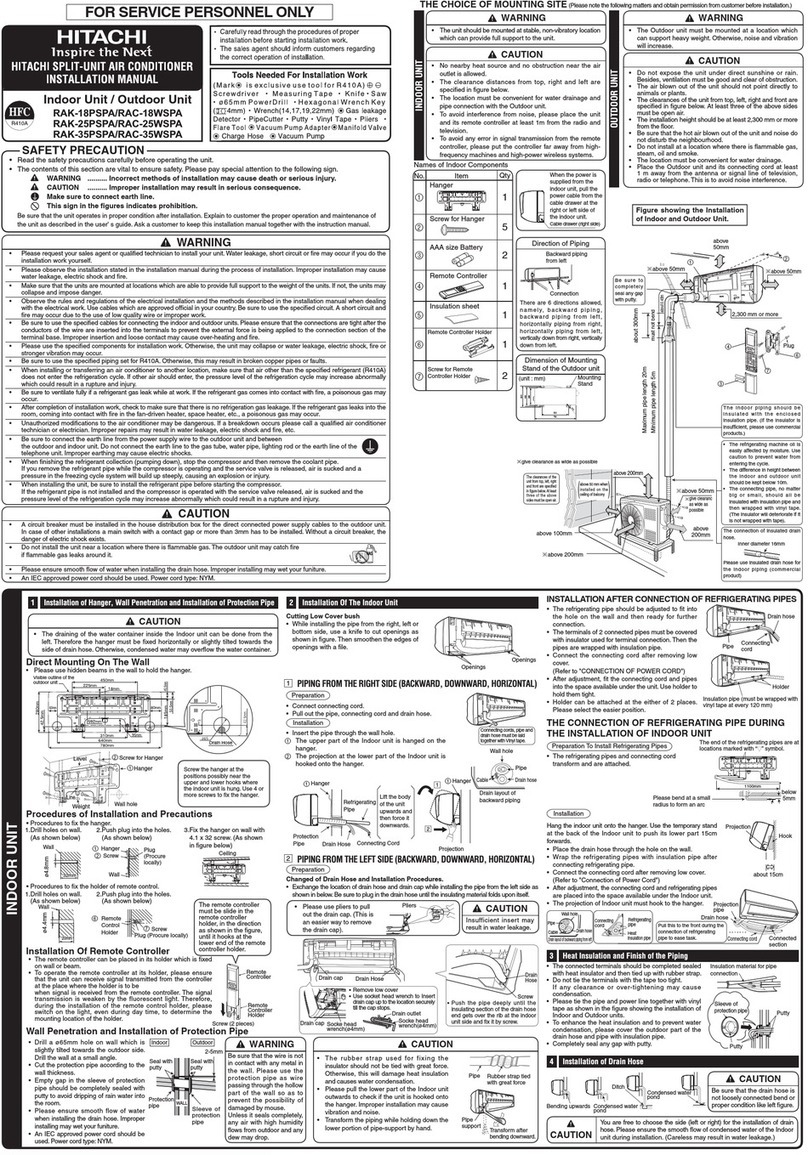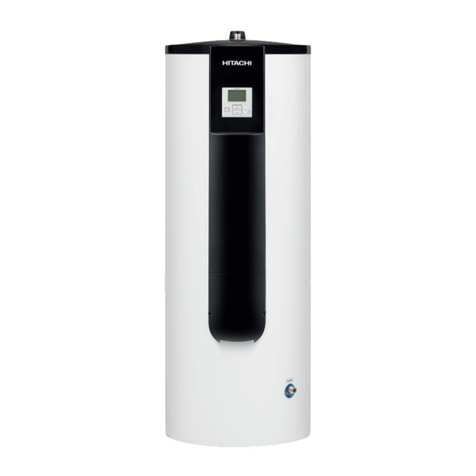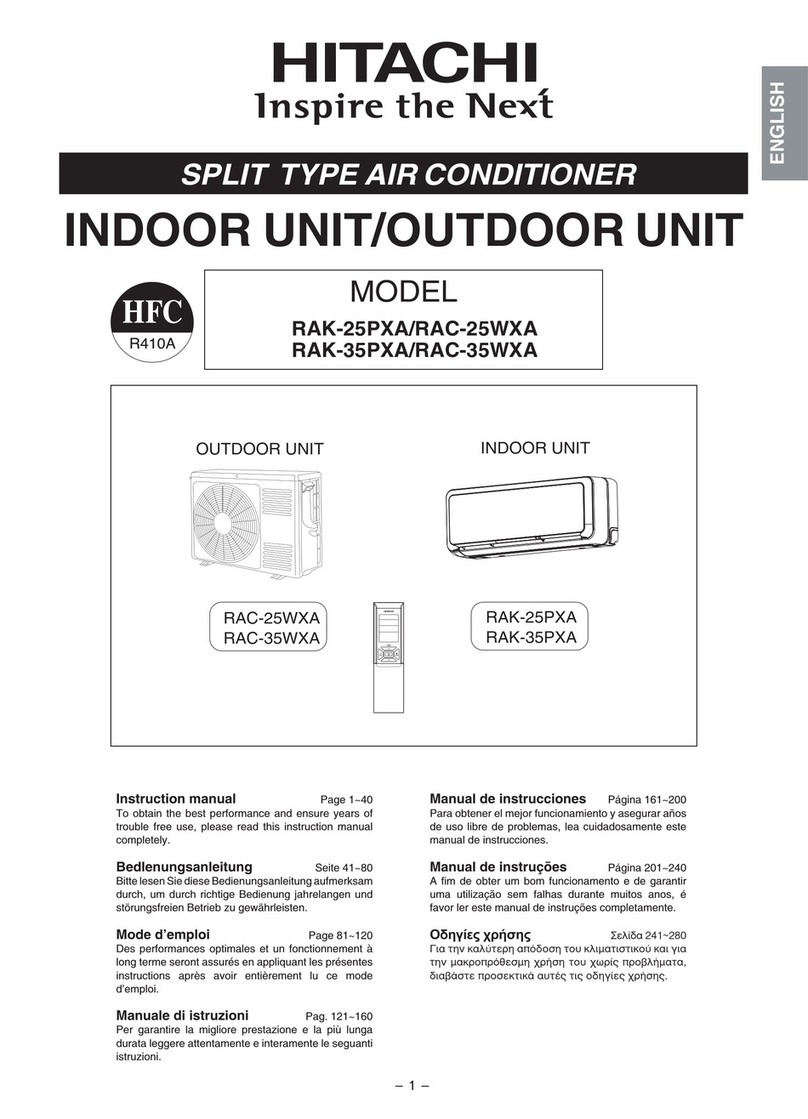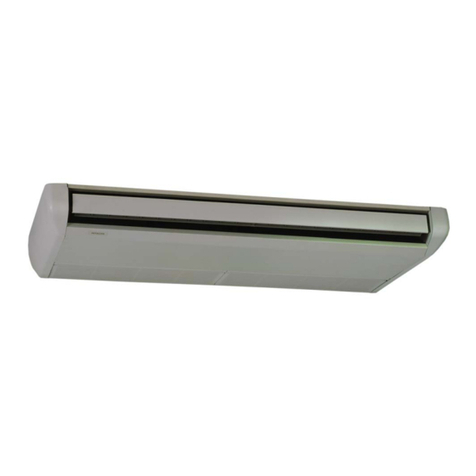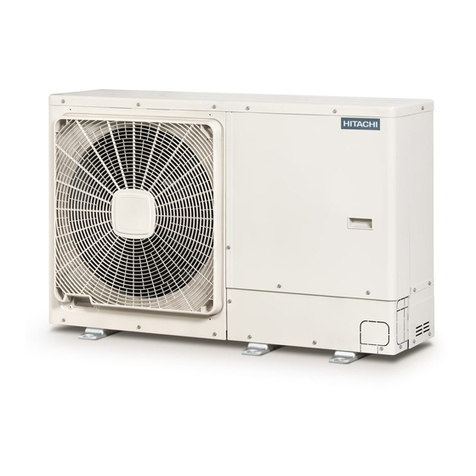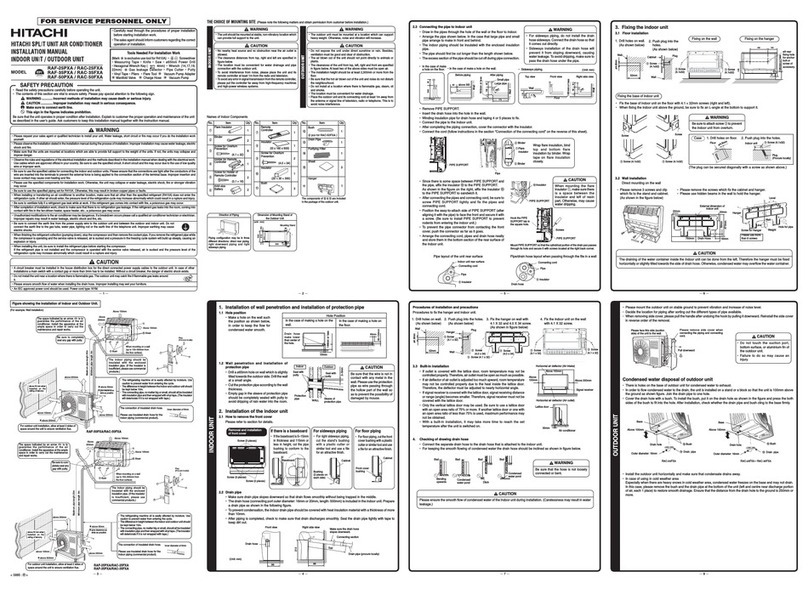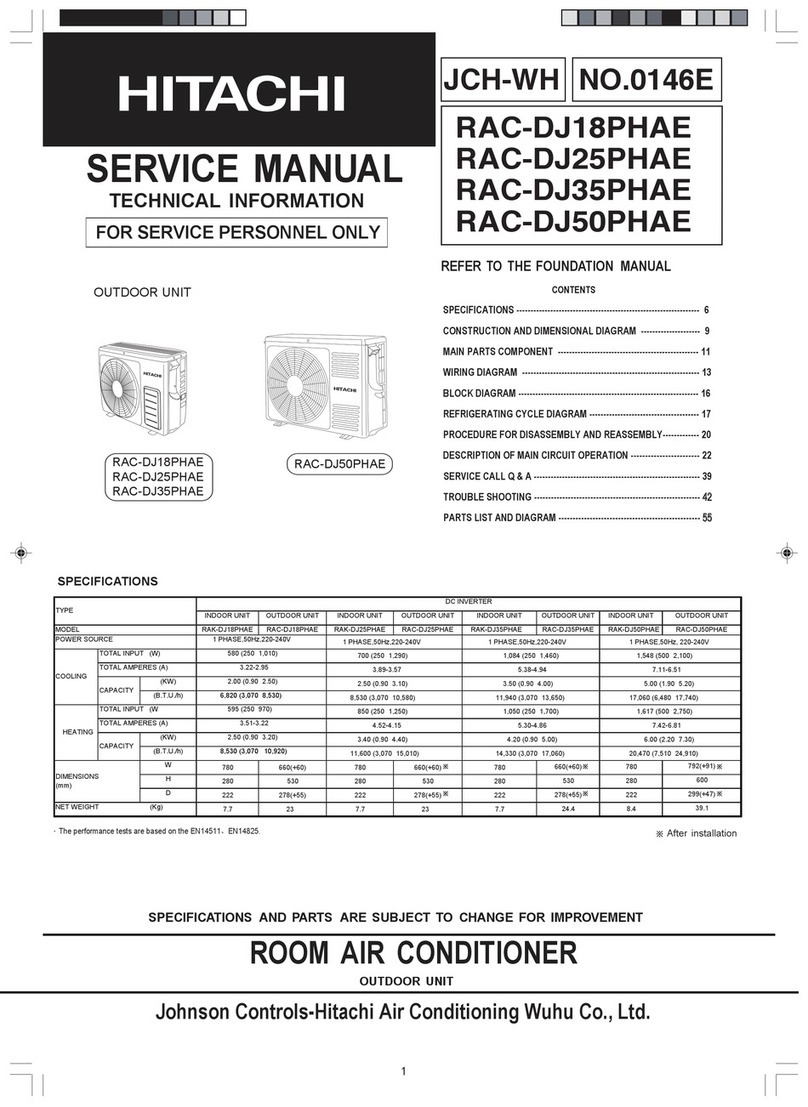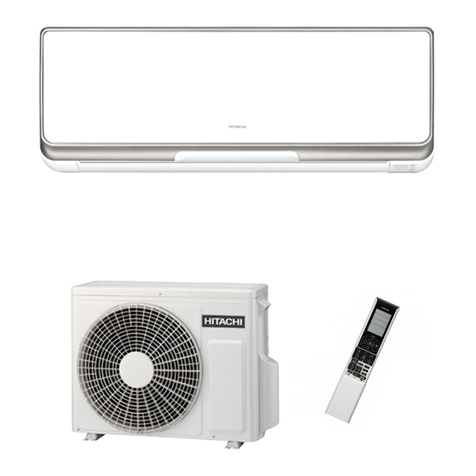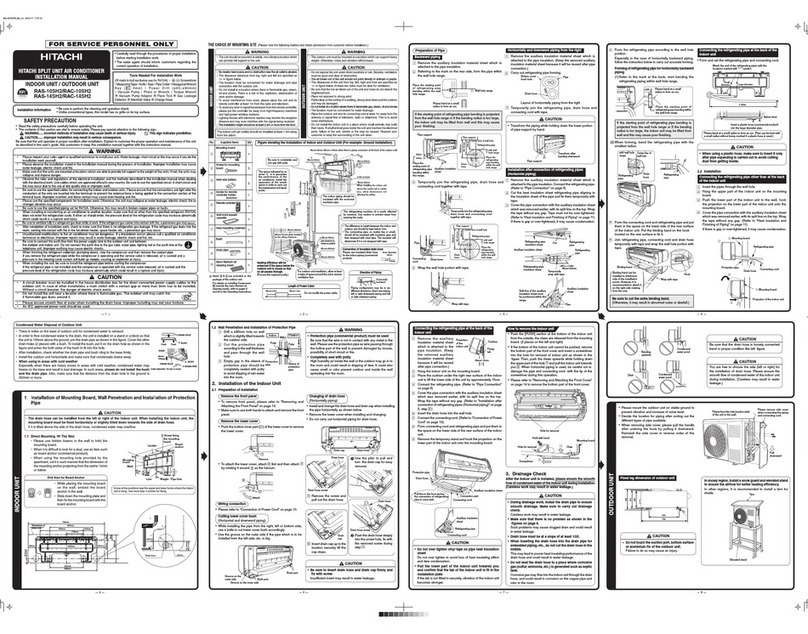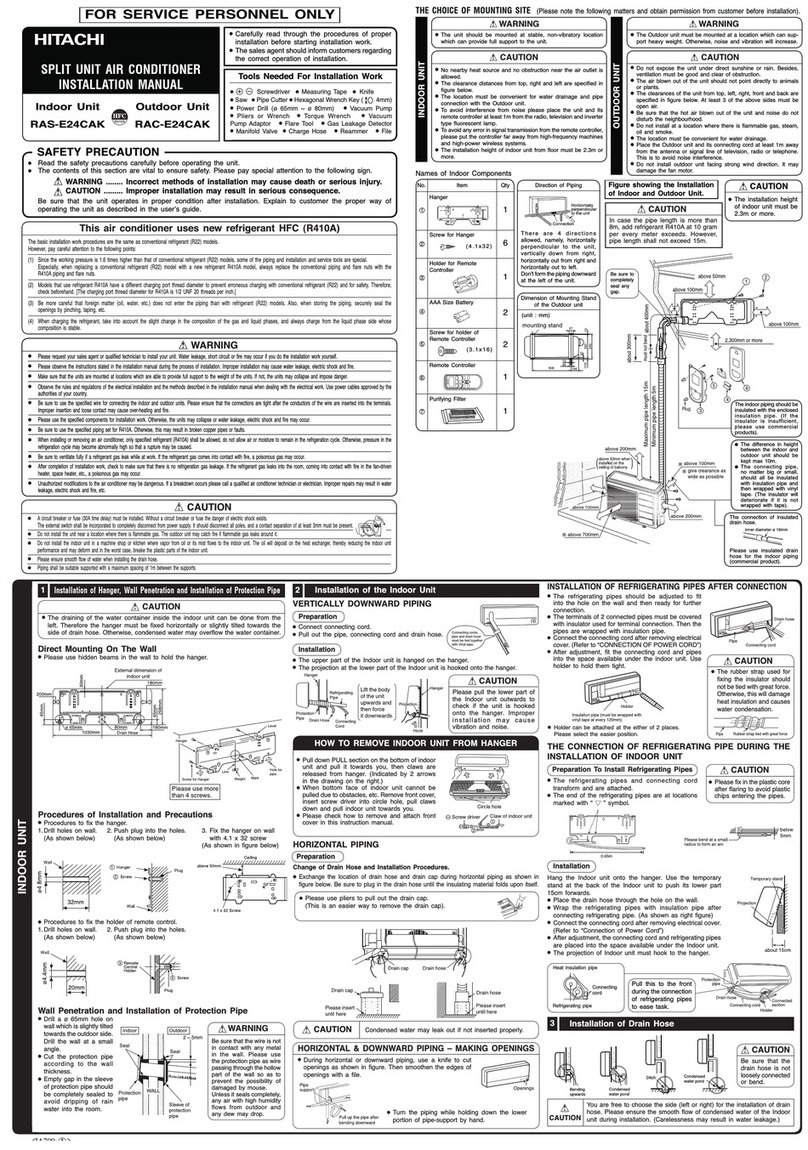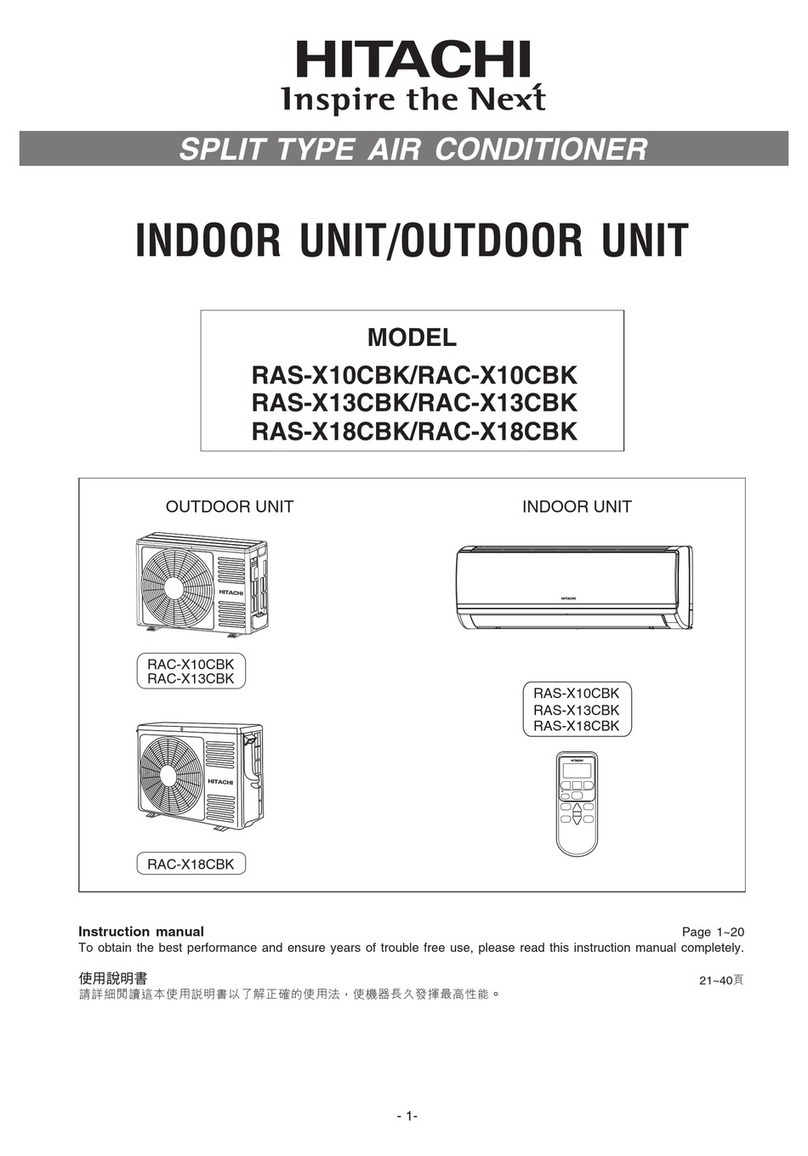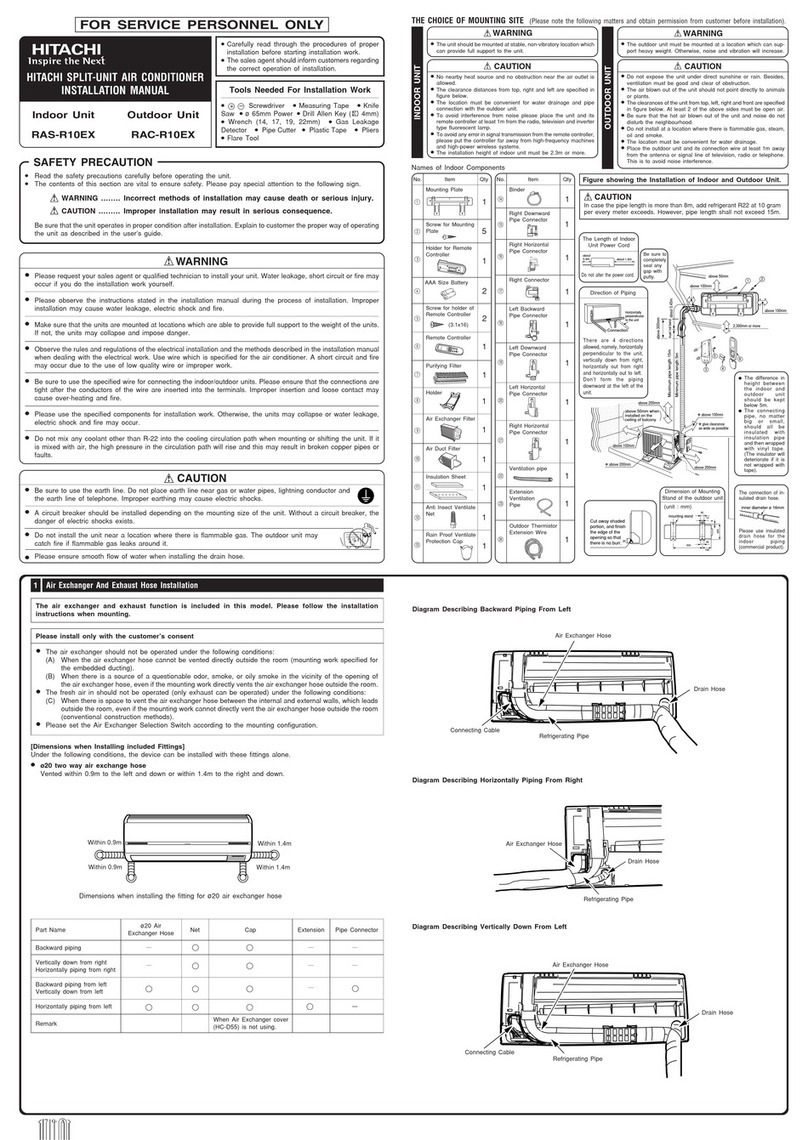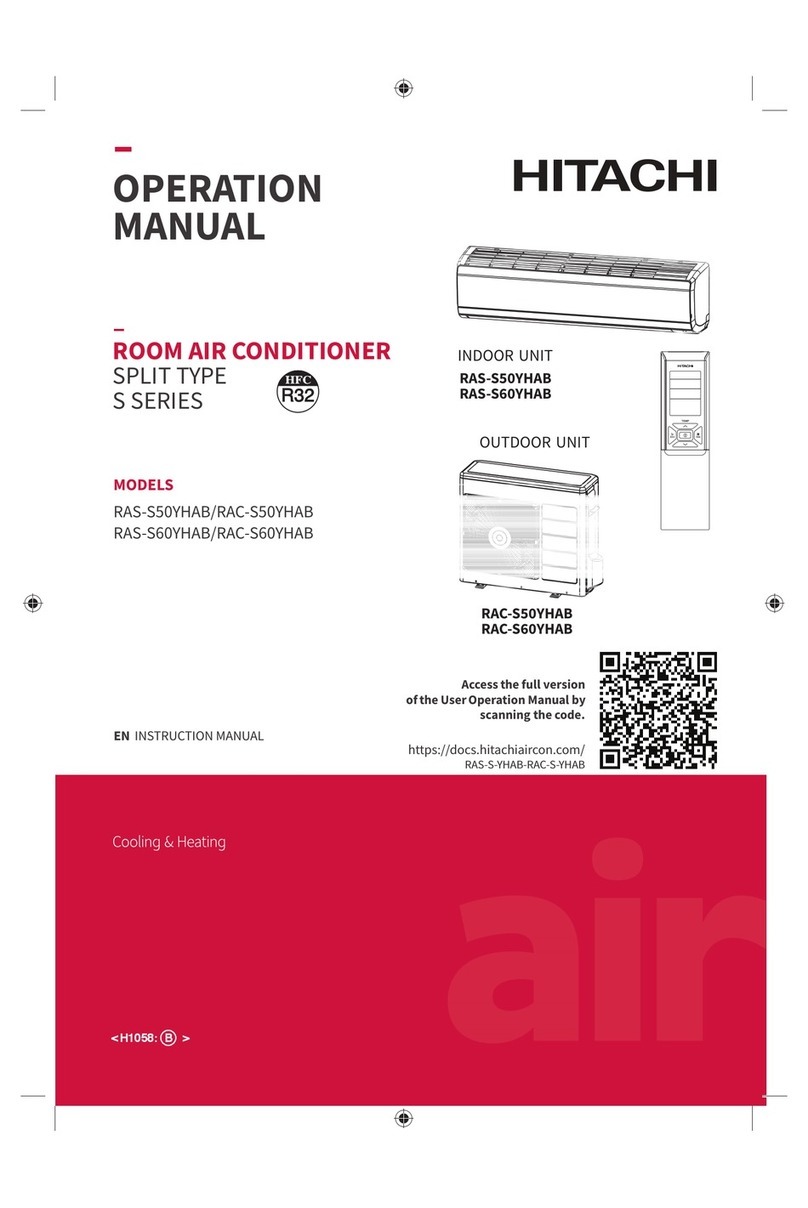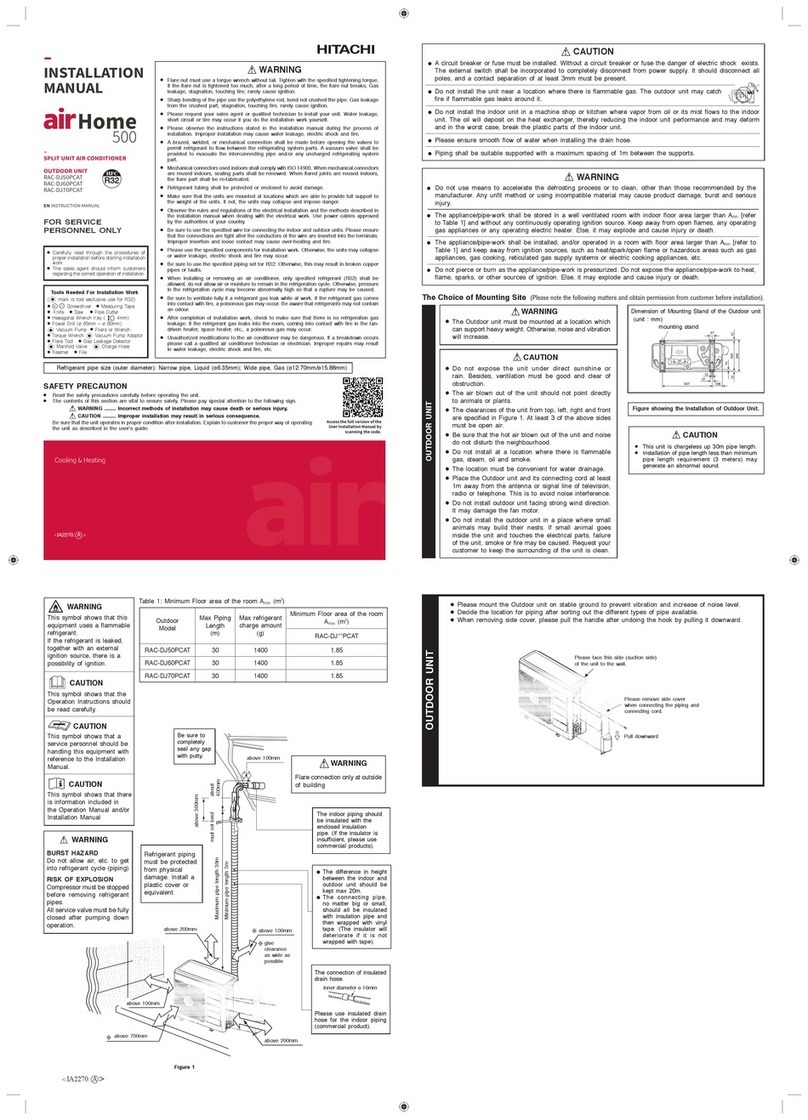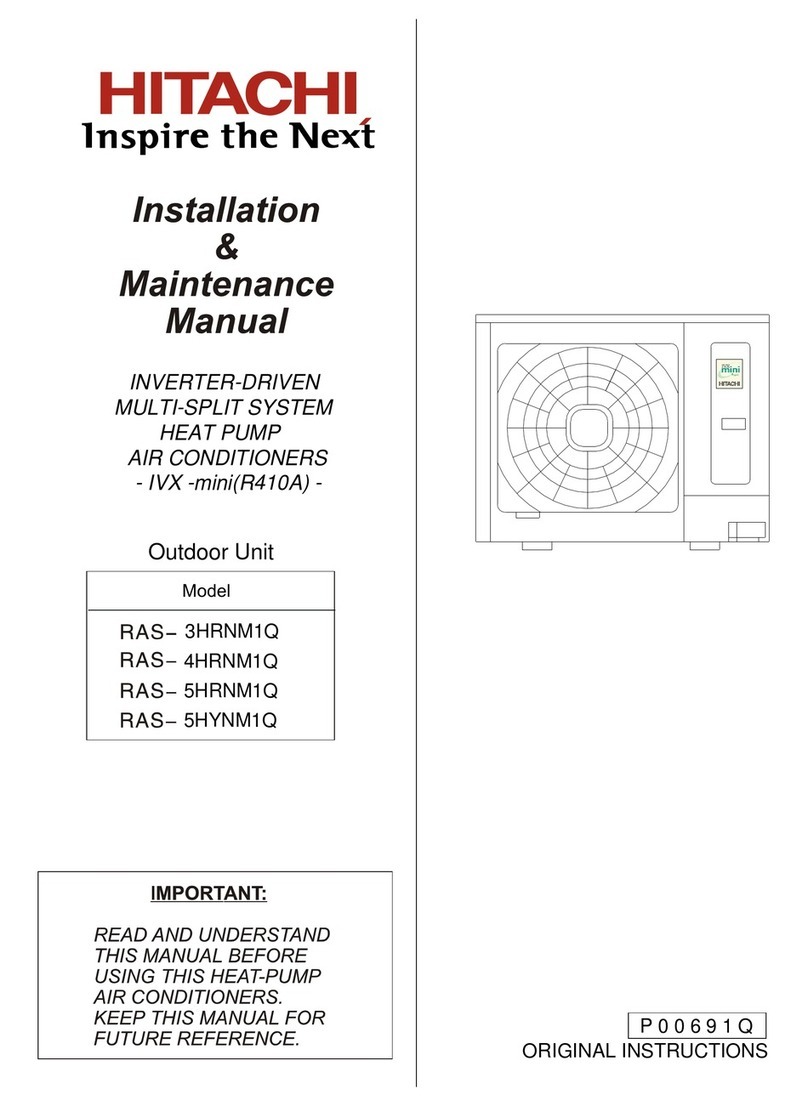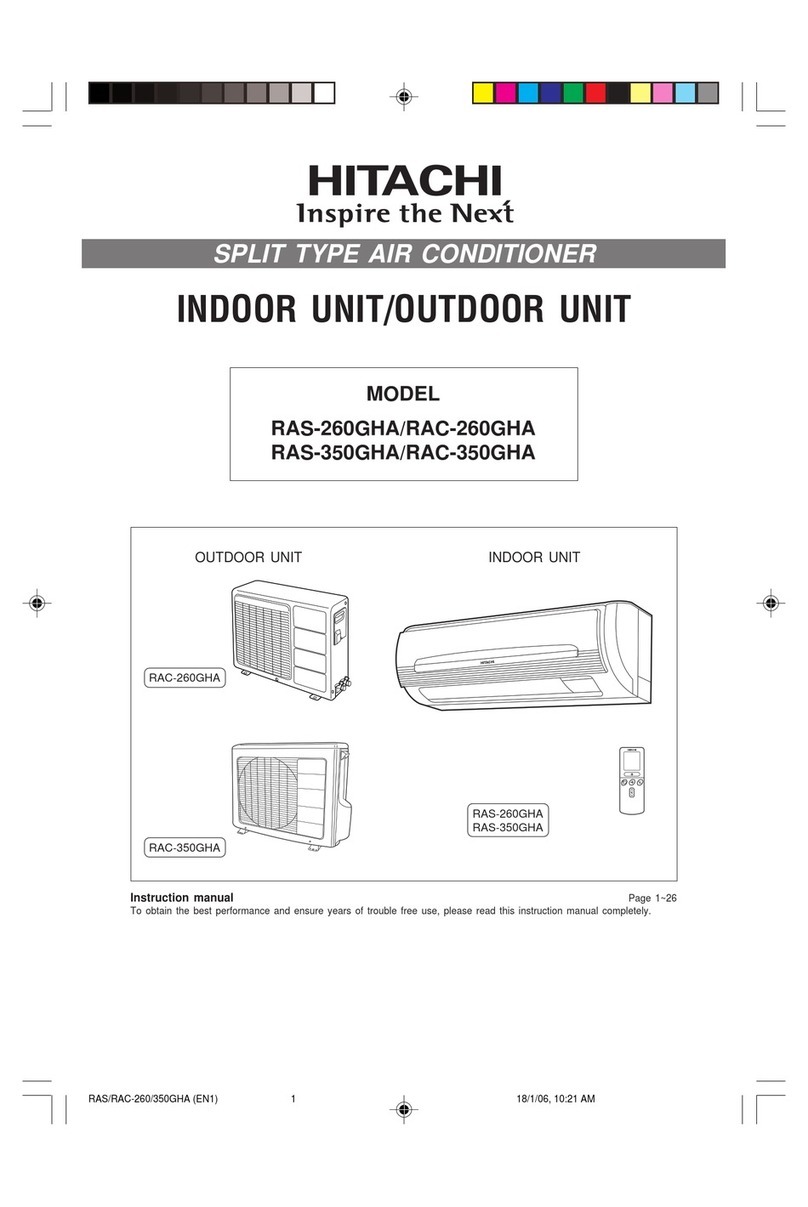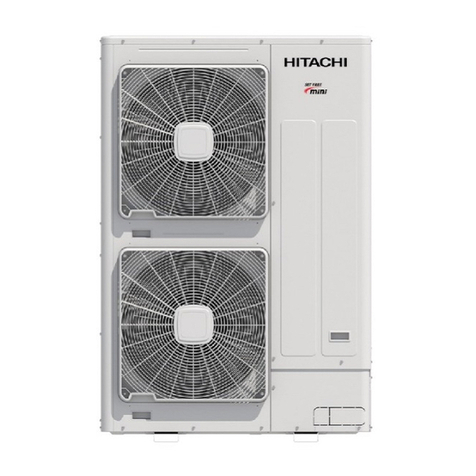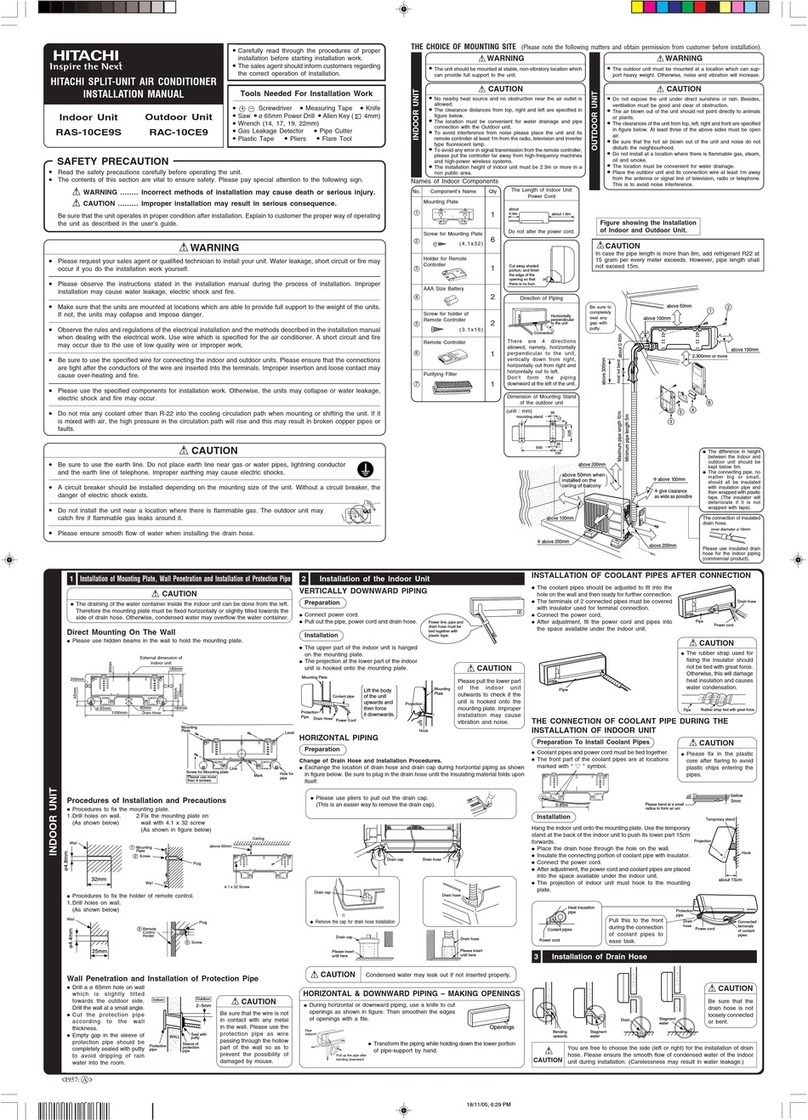
AVVERTENZA
4XHVWRVLPERORYLVXDOL]]DWRVXOO¶XQLWjLQGLFDFKHFLVRQRLQIRUPD]LRQL
ULOHYDQWLLQFOXVHQHO0DQXDOHG¶XVRHRQHO0DQXDOHGL,QVWDOOD]LRQH
3RUWXJXrV
ATENÇÃO
PERIGO DE REBENTAMENTO
1mRSHUPLWLUDHQWUDGDGHDURXGHTXDOTXHUPLVWXUDGHJiVFRPR[L-
JpQLRSDUDRFLFORGHUHIULJHUDomRLVWRpSDUDWXEDJHP
RISCO DE EXPLOSÃO
2 FRPSUHVVRU GHYH VHU GHVOLJDGR DQWHV GD UHPRomR GRV WXERV GH
refrigerante.
$V YiOYXODV GH PDQXWHQomR GHYHP HVWDU FRPSOHWDPHQWH IHFKDGDV
GHSRLVGDHOLPLQDomRGRUHIULJHUDQWH
ATENÇÃO
(VWHVtPERORPRVWUDGRQDXQLGDGHLQGLFDTXHDXQLGDGHFRQWpP5
XPJiVUHIULJHUDQWHLQÀDPiYHOHLQRGRURFRPXPDEDL[DYHORFLGDGH
GHTXHLPD&ODVVH$/GHDFRUGRFRP,62(PFDVRGHIXJDGH
UHIULJHUDQWHH[LVWHDSRVVLELOLGDGHGHLJQLomRVHHQWUDUHPFRQWDFWR
FRPXPDIRQWHGHLJQLomRH[WHUQD
CUIDADO
(VWH VtPEROR PRVWUDGR QD XQLGDGH LQGLFD TXH D XQLGDGH GHYH VHU
manuseada apenas por pessoal autorizado, mediante consulta do
0DQXDOGH,QVWDODomR
CUIDADO
(VWHVtPERORPRVWUDGRQDXQLGDGHLQGLFDTXHR0DQXDOGH)XQFLRQD-
PHQWRHRX,QVWDODomRLQFOXLLQIRUPDomRUHOHYDQWH
'DQVN
ADVARSEL
BRISTEFARE
Lad ikke luft eller en gasblanding, der indeholder ilt, komme ind i
kølemiddelcyklussen (dvs. rørføringen)
RISIKO FOR EKSPLOSION
Kompressoren skal stoppes, inden kølemiddelrørene fjernes.
Alle serviceventiler skal være helt lukkede, når kølemidlet er blevet
fjernet.
ADVARSEL
Dette symbol vises på enheden angiver, at enheden er fyldt med R32,
en brændbar og lugtfri kølemiddelgas med en langsom forbrænding-
shastighed (klasse A2L i henhold til ISO 817). Udslip af kølemiddel
kan forårsage brand, hvis kølemidlet kommer i kontakt med en ek-
stern antændelseskilde.
FORSIGTIG
Dette symbol vises på enheden angiver, at enheden kun skal hånd-
teres af autoriseret servicepersonale under henvisning til installations-
manualen.
FORSIGTIG
Dette symbol vises på enheden angiver, at der er relevante oplys-
ninger, der er indeholdt i drifts- og/eller installationsmanualen.
1HGHUODQGV
WAARSCHUWING
BARSTGEVAAR
Laat geen lucht of een gasmengsel dat zuurstof bevat in de koelmid-
delcyclus (d.w.z. leidingen).
EXPLOSIEGEVAAR
De compressor moet worden gestopt alvorens de koelmiddelpijpen
te verwijderen.
Alle onderhoudskranen moeten volledig gesloten zijn na het pompen.
WAARSCHUWING
Dit symbool op het apparaat geeft aan dat het apparaat is gevuld met
R32, een geurloos ontvlambaar koelmiddel met een lage brandsnel-
heid (klasse A2L volgens ISO 817). Als het koelmiddel lekt, kan het
ontbranden wanneer het in contact komt met een externe ontstek-
ingsbron.
LET OP
Dit symbool op het apparaat geeft aan dat het apparaat alleen door
bevoegd personeel mag worden gebruikt, met verwijzing naar de in-
stallatiehandleiding.
LET OP
Dit symbool op het apparaat geeft aan dat er relevante informatie is
opgenomen in de gebruiksaanwijzing en / of installatiehandleiding.
6YHQVND
VARNING
SPRÄNGRISK
Låt ingen luft eller gasblandning innehållande syra komma in i kylme-
delcykeln (t.ex. rörledning)
RISK FÖR EXPLOSION
Kompression måste stängas av innan kylrören avlägsnas.
Alla serviceventiler måste stängas av ordentligt efter nedpumpning.
VARNING
Den här symbolen som visas på enheten indikerar att enheten är
fylld med R32, ett luktfritt brandfarligt kylmedel med låg förbränning-
VKDVWLJKHW$/NODVVHQOLJW,622PN\OPHGHOOlFNHUXW¿QQVGHW
risk för antändning om det kommer i kontakt med en extern antänd-
ningskälla.
VARNING
Den här symbolen som visas på enheten indikerar att enheten endast
får hanteras av auktoriserad servicepersonal och i enlighet med instal-
lationsmanualen.
VARNING
Den här symbolen som visas på enheten indikerar att användarmanu-
alen/installationsmanualen innehåller viktig information.
(ȜȜKQLND
ȆȇȅǼǿǻȅȆȅǿǾȈǾ
ȀǿȃǻȊȃȅȈĭȍȉǿǹȈ
ȂȘȞ İʌȚIJȡȑʌİIJİ IJȘȞ İȓıȠįȠ ĮȑȡĮ Ȓ ȠʌȠȚȠįȒʌȠIJİ ȝİȓȖȝĮ ĮİȡȓȠȣ ʌȠȣ
ʌİȡȚȑȤİȚȠȟȣȖȩȞȠıIJȠȞțȪțȜȠȥȣțIJȚțȠȪȝȑıȠȣįȘȜĮįȒıȦȜȒȞȦıȘ
ȀǿȃǻȊȃȅȈǼȀȇǾȄǾȈ
ȅ ıȣȝʌȚİıIJȒȢ ʌȡȑʌİȚ ȞĮ ȑȤİȚ ıIJĮȝĮIJȒıİȚ ʌȡȠIJȠȪ ĮijĮȚȡȑıİIJİ IJȠȣȢ
ıȦȜȒȞİȢȥȣțIJȚțȠȪȝȑıȠȣ
ǵȜİȢȠȚȕĮȜȕȓįİȢȜİȚIJȠȣȡȖȓĮȢʌȡȑʌİȚȞĮİȓȞĮȚʌȜȒȡȦȢțȜİȚıIJȑȢȝİIJȐIJȘȞ
ȜİȚIJȠȣȡȖȓĮȐȞIJȜȘıȘȢ
ȆȇȅǼǿǻȅȆȅǿǾȈǾ
ǹȣIJȩ IJȠ ıȪȝȕȠȜȠ ʌȠȣ İȝijĮȞȓȗİIJĮȚ ıIJȘ ȝȠȞȐįĮ įİȓȤȞİȚ ȩIJȚ Ș ȝȠȞȐįĮ
İȓȞĮȚȖİȝȐIJȘȝİ5ȑȞĮȐȠıȝȠİȪijȜİțIJȠȥȣțIJȚțȩȝİȤĮȝȘȜȒIJĮȤȪIJȘIJĮ
țĮȪıȘȢțȜȐıȘ$/ıȪȝijȦȞĮȝİIJȠʌȡȩIJȣʌȠ,62ǾįȚĮȡȡȠȒIJȠȣ
ȥȣțIJȚțȠȪȝȑıȠȣȝʌȠȡİȓȞĮʌȡȠțĮȜȑıİȚʌȣȡțĮȖȚȐĮȞȑȡșİȚıİİʌĮijȒȝİ
ȑȞĮİȟȦIJİȡȚțȩȝȑıȠ
ȆȇȅȈȅȋǾ
ǹȣIJȩ IJȠ ıȪȝȕȠȜȠ ʌȠȣ İȝijĮȞȓȗİIJĮȚ ıIJȘ ȝȠȞȐįĮ įİȓȤȞİȚ ȩIJȚ Ș ȝȠȞȐįĮ
ʌȡȑʌİȚȞĮʌȡĮȖȝĮIJȠʌȠȚİȓIJĮȚȝȩȞȠĮʌȩİȖțİțȡȚȝȑȞȠʌȡȠıȦʌȚțȩıȑȡȕȚȢ
ıȪȝijȦȞĮȝİIJȠİȖȤİȚȡȓįȚȠİȖțĮIJȐıIJĮıȘȢ
ȆȇȅȈȅȋǾ
ǹȣIJȩIJȠıȪȝȕȠȜȠ ʌȠȣİȝijĮȞȓȗİIJĮȚıIJȘȝȠȞȐįĮįİȓȤȞİȚȩIJȚ ȣʌȐȡȤȠȣȞ
ıȤİIJȚțȑȢʌȜȘȡȠijȠȡȓİȢıIJȠİȖȤİȚȡȓįȚȠȜİȚIJȠȣȡȖȓĮȢțĮȚȒıIJȠİȖȤİȚȡȓįȚȠ
İȖțĮIJȐıIJĮıȘȢ
